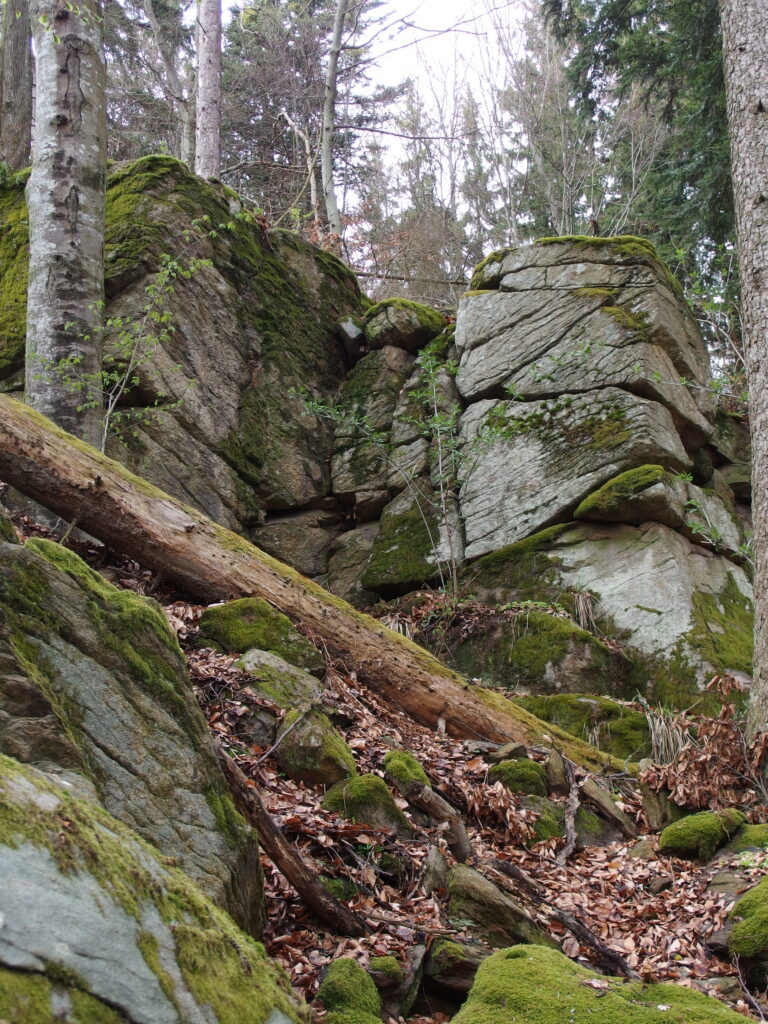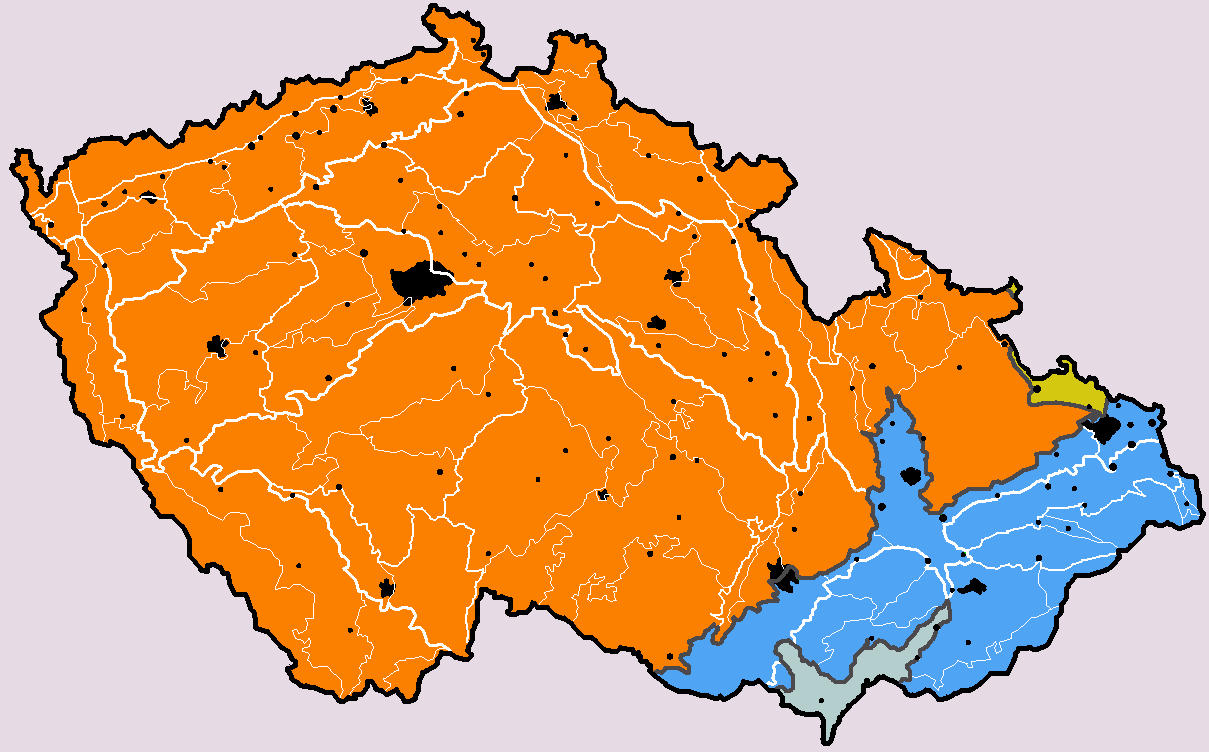The current content is only in the Czech version for now.
The title of the initial page is a wannabe humorous reminder of Emmerich’s Hollywood film (10,000 BC). However, the film’s producer, either through lack of imagination or courage, refused to credit a few extra zeros for the one.
However, we will not go around the geopolymeric megalithic porridge that cooled down ages ago for long and we will establish an uncompromising narrative that seems obvious to us.
THING: The settlement of the tops of the mountains and the existence of ruins of stone buildings on them.
LOCATION: GABRETA.
DATE: Deep Prehistoric.
For the purpose of our hypothesis we mean Šumava, we take the name from Celtic times – GABRETA. It extends from the northern subprovinces of the Bohemian Forest (Chebsko, with an overlap into Bavaria) through the Sumava foothills (Kašperské hory, Vimperská vrchovina, Blanský les) to the easternmost subprovince of the Novohradské hory (with an overlap into Austria).
The unique geologically internally cemented area of Šumava – GABRETY was formed 300-400 million years ago.
The highlands have not undergone a major transformation since then, their peaks are still the same. If something was formed on them tens of millions of years ago, we can find it there today. This is what makes this area, with hundreds, perhaps thousands, of artificially formed rock structures preserved, absolutely unique. The local inhabitants, settled in this area with some of the oldest structures on the planet, once formed a nation. Perhaps by absorbing the energy, still perhaps springing up in places where it was embedded in the rock and bedrock, they were able to maintain their sovereignty and national character until recently.
In time we place the story of the first settlement of Gabreta in the period 10 million years ago. Hypothetically, not much less, but perhaps much more. We have tried to determine the time by the condition of the rocks of interest. Their erosion-decay has lasted, according to expert geological opinion, exactly: …. an indeterminate number of millions of years. The rate of decay depends on the surrounding conditions. In the presence of higher temperatures and humidity, it is more intense, and in lower temperatures it is slower. Significant climate change on the scale of tens of thousands of years is almost certain.
Millions of years ago, an unknown civilization resided on the territory of Gabreta (and probably widely around it), whose technological sophistication is now judged mainly by the ability that it alone bridged the vast gulf of ages. The ability to shape and manipulate rock as the basic structural element of buildings. Buildings of a type, both residential and technical, of a purpose as yet unknown to us.
Let us take our imaginations back into the very deep past and assume (the reasons for which follow from other hypotheses mentioned on this site) that the GABRETY site was at that time at a significantly more southerly latitude and in a warmer climate. The surface of the earth was covered with a different type of vegetation. Herds of megafauna, accompanied by predators of the appropriate size, were probably present in the lowlands. Elsewhere, water-fed streams flowed, occasionally bursting into floods.
Therefore, the peaks of the highlands were, by their very location, a logical, safe place for civilization to settle. Civilization built stone (rock) structures on them in the form of arch walls, pillars or outer “lowered walls”. In fact, on parts of the perimeter of the usually table-like aligned hills, we find perpendicular, perfectly flat, smooth walls descending from the upper plane to a depth of tens of metres.
Another type of wall, partly composed of stone blocks, gradually rises above the terrain along the slope ridges. The walls may perhaps have been superstructures of smaller and medium-sized stone blocks, now rolled down the slopes in stone seas. It is difficult for us to form an idea of the appearance and construction without knowing the specific technology available to civilization. So far, the logic of its reasoning escapes us. Could the extant rock structures – the walls and prismatic pillars – have been merely the basis for an elevated slab platform with additional structures and an extensive linear transportation network? The idea of semi-columns to protect structures from weathering is suggested. A combination of readily available, durable material in the form of rock, metal alloys (perhaps in the form of couplings, frames and grids, now only seen as decals in the rock) and perhaps other materials (some form of (bio)polymers?) would make sense. However, a material other than rock had no chance of withstanding the ages.
What remnants of our vanished civilization would we find after millions of years? Would there be any fossils left of us?
Over the rocky sea up to the sloping ridge of Bulový Hill in the Blanský Forest. On it stretches a megalithic wall. It is possible to walk along the crown of the wall. It gradually gains height above the terrain.
Formed blocks of megalithic wall with a prismatic bastion. The slope ridge (Bird Wall) of Bulový Hill.
Beneath the megalithic structures we find a flood of stone seas, scattered at the foot and far down the slope. collapsed not only by gravity. But also, by sheer force, thrown over great distances by repeated cataclysms, after the violent massive crustal shift and subsequent earthquakes.
What served as food for the inhabitants of the unknown civilization and how it was procured we do not know. However, we can infer the provision of a water supply from a number of building structures in various parts of our country and across the planet. It is likely that wells up to hundreds of metres deep were dug using technology, extending from the top of the hills to the bedrock of the highlands.

An example of a well built perhaps in the Middle Ages, dating back to the first half of the 14th century. Helfštýn Castle. Devil’s Well, estimated depth 100-160 m.
The Great GABRET civilization settled every major peak in the highlands and built many structures. Today, depending on the type of rock and the location of the site, they have collapsed and crumbled to varying degrees. Nevertheless, despite the advanced erosion of the rocks, they bear the characteristic elements of their artificial formation.
Mysterious structure on Ptačí stena, Blanský les
Bird wall, Blanský les
Block bound wall, Kraví hora, Vyšší Brod



A note on the scope of the research:
Our research on artificially formed rock structures was narrowed down to the GABRETY area in the first phase. However, the research will often extend to other areas of Bohemia and Moravia, belonging to the Bohemian Highlands. There is no reason not to expect the identification of structures similar to those of GABRETA in the whole area of the Bohemian Highlands.
Geomorphological division of the Czech Republic.
Czech Highlands with subprovinces. Czech Highlands; Central European Lowlands; Western Carpathians; West Pannonian Basin.
….
Copyright © 2021-2023 – globalnipravek.cz
Stránka publikována 22. 7. 2022, upravena 28. 4. 2023.












